Discover 7 hidden attractions, cool sights, and unusual things to do in Monroe (United States). Don't miss out on these must-see attractions: First Methodist Church, Green County Courthouse, and Monroe Water Tower. Also, be sure to include Jacob Regez Sr. House in your itinerary.
Below, you can find the list of the most amazing places you should visit in Monroe (Wisconsin).
Table of Contents
First Methodist Church
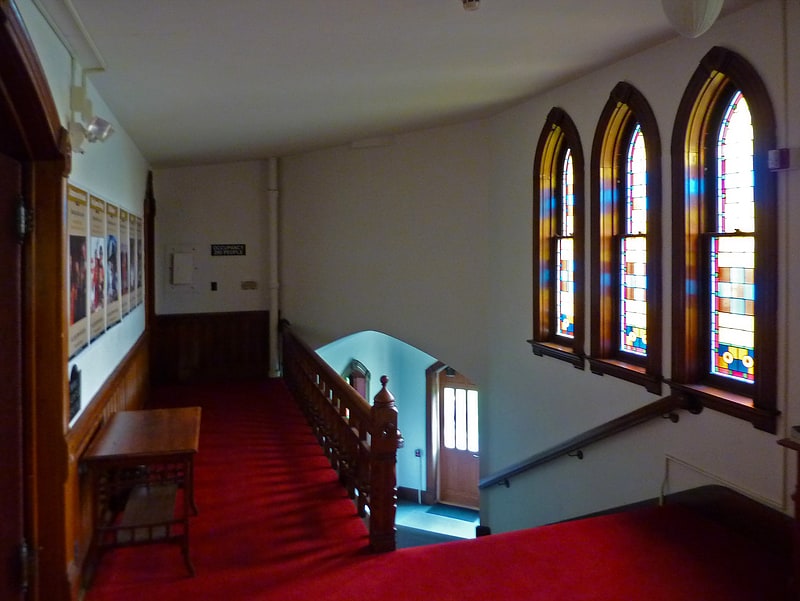
Methodist church in Monroe, Wisconsin. The First Methodist Church in Monroe, Green County, Wisconsin, now the Monroe Arts Center, is a Gothic Revival edifice designed by the former Wisconsin State Architect E. Townsend Mix of Milwaukee and constructed of Cream City brick. It was commissioned in 1869 by the First Methodist Episcopal congregation of Monroe to replace an earlier church building that dated to 1843. The adjacent parsonage was completed in 1886, and the complete ensemble was finally dedicated in 1887.
With its pointed-arch windows as well as the steeply pitched roof and tall, narrow tower, the church exemplifies the late-Gothic revival style. The angled corner belfry tower and decorative brickwork are additional hallmarks of Mix's design. Perhaps the most striking feature is the rose window with elaborate tracery on the front facade, composed of teardrop-shaped stained-glass panes.
The building was added to the National Register of Historic Places in 1975.[1]
Green County Courthouse

Courthouse. The Green County Courthouse, located on Courthouse Square in Monroe, is the county courthouse serving Green County, Wisconsin. Built in 1891, it is the county's second permanent courthouse. Architect G. Stanley Mansfield designed the Richardsonian Romanesque building. The courthouse was added to the National Register of Historic Places in 1978.[2]
Address: 1016 16th Ave, 53566-1703 Monroe
Monroe Water Tower
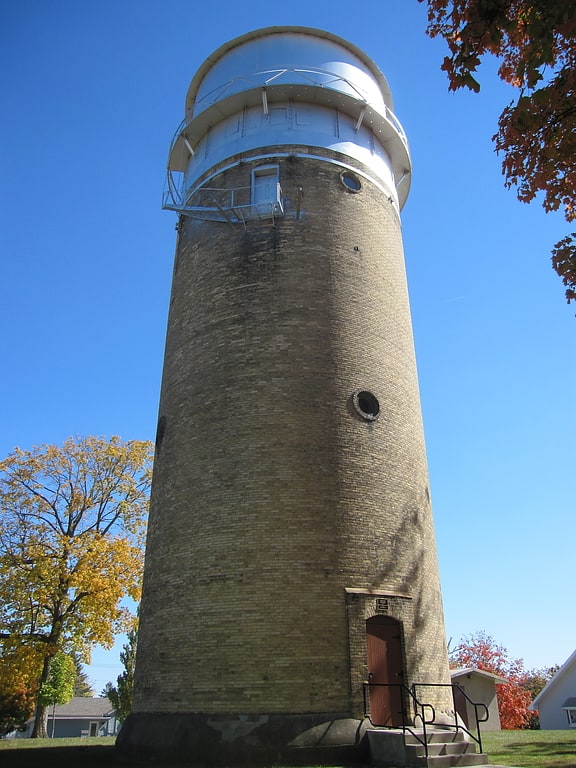
Monument in Monroe, Wisconsin. The Monroe Water Tower is a historic water tower built in 1889 in Monroe, Wisconsin. It was added to the National Register of Historic Places in 2005.
The first settlers came to Monroe in the 1830s. The community grew, adding a sawmill and other small industries. The railroad came in 1858, and Monroe incorporated as a village the same year. In 1870 a fire department was organized - a major public service - but its source of water wasn't much better than a bucket brigade. In 1888 the Monroe Electric Light Company began providing electricity to homes and street lights. In the same year, the Wisconsin Telephone Company began offering limited telephone service.
In May 1889, W.H. Wheeler of Beloit offered to drill a well and build a "water works" for Monroe. The city council approved the project, agreeing to fund it if Wheeler would operate the system. Work commenced, but after some snags, Wheeler took on the city's responsibilities in exchange for a 20-year franchise to operate the water system. The project accelerated and by the end of 1889, the well was drilled, the water tower was up, and water lines were laid. A successful test was conducted on New Year's Day of 1890.
The tower was built much as it appears today. From a limestone foundation, cream brick walls rise 80 feet, forming a cylinder 28 feet across. On top of the brick walls sits a steel tank which holds 100,000 gallons of water; originally it was a wooden tank of the same capacity. The current tank is capped with a steel cone. The walls are interrupted by four porthole openings halfway up and four more just below the top of the brick. A doorway at the bottom leads inside, where a wooden staircase climbs around an inner cylinder of brick, which sheaths the pipe rising from the well and provides additional support for the tank above. Another doorway at the top of the tower opens to a metal staircase outside of the tower which leads to a catwalk around the metal tank.
Though a water tower now seems the obvious solution for a small town, different ideas were competing in 1889, and Wheeler had to defend his design. He said the elevated tank was better than pumps alone because it would reliably provide high pressure if needed to extinguish a fire. The elevated tank was better than a standpipe because Monroe didn't have a high hill to place it on, and if a standpipe was drawn down, water pressure would drop. The wooden tank, he said, would be more reliable than metal, and would better protect the water from freezing. (Costs may have played a role in his preferences too.)
The community seemed happy with the system. The Monroe Sentinel pointed out the "efficient fire protection," which would reduce insurance rates and raise property values. In homes, people had convenient water, and clean.
Wheeler initially operated the water works, but by 1898 he asked the city to take it over. In 1906 the city did buy it, for $85,000. In 1914 the wooden tank needed replacement, and the city replaced it with the current steel tank built by the Des Moines Bridge and Iron Company. That tank served the community until 1993. Then the city considered demolishing the tower, but the Monroe Historical Society worked for its preservation. The tower is considered eligible for the NRHP for two criteria: it is a good example of small-town water tower construction in the late 19th century, and it symbolizes a turning point when Monroe's government began providing major public services.[3]
Jacob Regez Sr. House
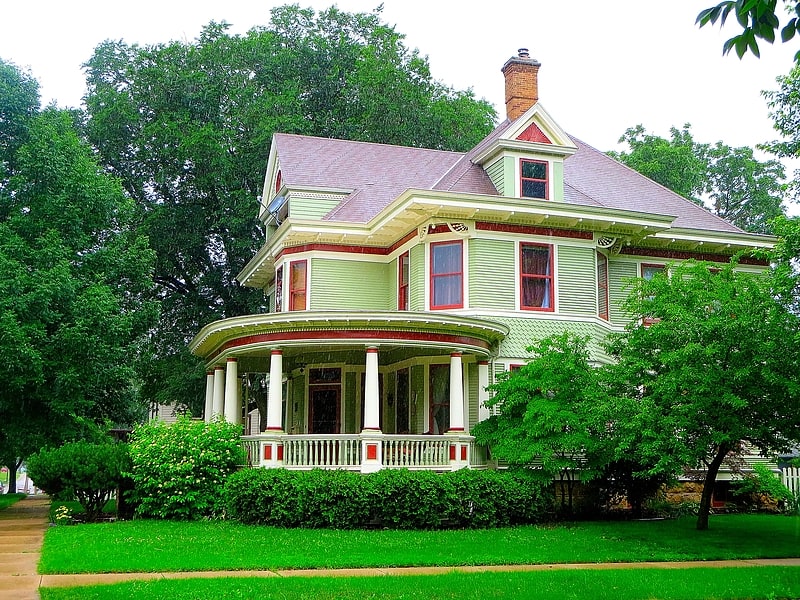
The Jacob Regez Sr. House is a historic house built in 1901 by an important local cheesemaker in Monroe, Wisconsin, United States. It was added to the National Register of Historic Places on January 17, 1980.[4]
General Francis H. West House
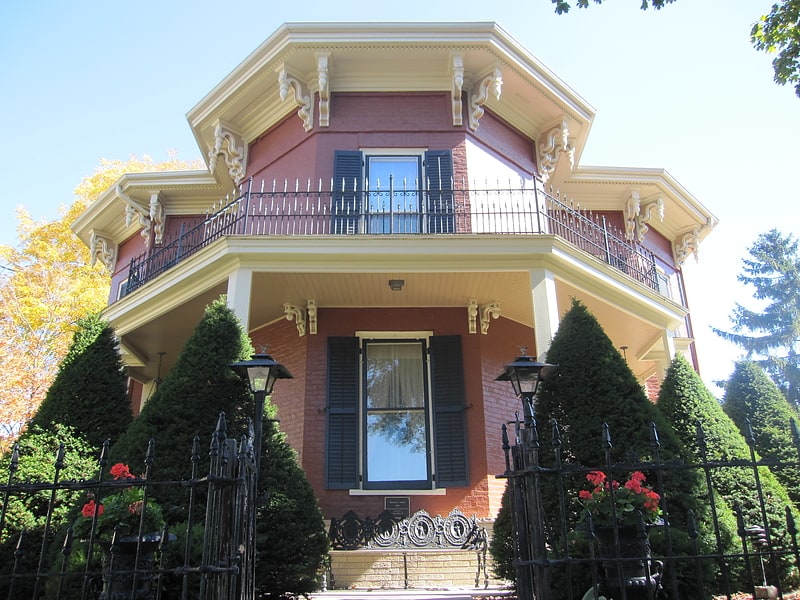
The General Francis H. West House is an octagon house built in 1860 in Monroe, Wisconsin. It was listed on the National Register of Historic Places in 1975 for its association with the historically significant West, and for its unusual combination of multiple polygons.
Francis H. West was a New Englander who came west to become an early settler of the Monroe area. He had a diverse career, including lead miner, lumberman, state senator, and California explorer. During the Civil War he commanded the 31st Wisconsin Volunteer Infantry Regiment. In the 1850s, West built a wooden octagon house on the same property as the current house, but it was torn down in the 1930s.
West built the current octagon house from 1860 to 1861, with walls of brick two stories high. Most octagon houses are a single octagon, but this one is three joined polygons, with a rectangular wing behind and a small octagonal cupola on top of them all. The styling outside is Italianate, with brackets and knob pendants under the eaves.
Inside, the first floor contains a foyer, a parlor, a study, and a dining room, with the rectangular wing containing a kitchen, a family room, and a patio. Some of these rooms have parquet floors. The second floor holds bedrooms and a bathroom, with a library in the rectangular wing. From the start, West's house included a progressive-for-the-time gravity plumbing system fed by a tank in the attic, and an "air conditioning" system which let air funnel from the cupola above into the rooms below.
Orson Fowler of New York was the proponent of octagon houses, publishing a book on them in 1847. It's unclear how much Francis West was influenced by Fowler, but West's combination of polygons is unique in Wisconsin and not an idea from Fowler.[5]
Gen. James Bintliff House
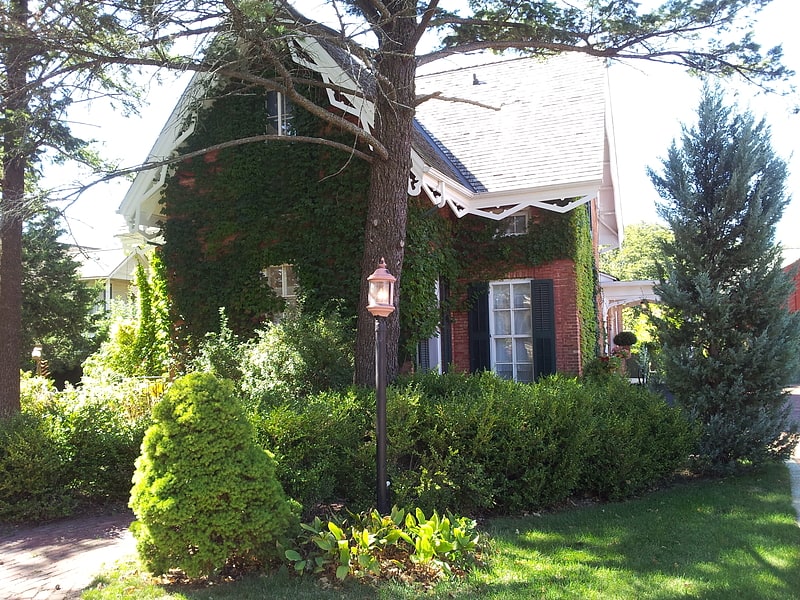
The Gen. James Bintliff House was built in 1858 in Monroe, Wisconsin, United States. It was added to the National Register of Historic Places in 1979.[6]
Freitag's Pure Oil Service Station

Freitag's Pure Oil Service Station is an automobile service station styled like an English cottage and built in Monroe, Wisconsin in 1935 by the Pure Oil Company. It was added to the National Register of Historic Places in 1980.[7]